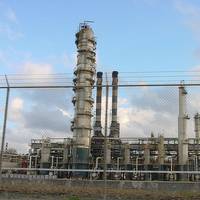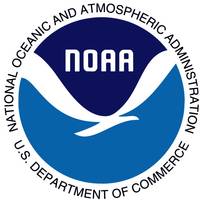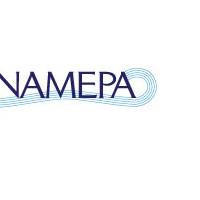Idled St. Croix Refinery Risks Explosion, 'Catastrophic' Releases

Equipment corrosion at an oil refinery in the U.S. Virgin Islands presents a risk of fire, explosion or other "catastrophic" releases of hazardous substances, U.S. environmental regulators said on Tuesday, after performing an inspection last month.The idled St. Croix refinery, formerly called Limetree Bay, was shut down by the U.S. Environmental Protection Agency in May 2021 after a series of chemical releases into the environment sickened neighboring residents. The refinery was sold in December 2021 for $62 million to West Indies Petroleum and Port Hamilton Refining and Transportation…
BSEE, NOAA Enhance Response Mapping

BSEE and NOAA to complete Arctic oil spill response mapping tool. The Bureau of Safety and Environmental Enforcement (BSEE) and the National Oceanic and Atmospheric Administration (NOAA) announced today they are partnering to enhance the Environmental Response Management Application (ERMA®) for the Arctic region by summer 2012. ERMA® is the same interactive online mapping tool used by federal responders during the Deepwater Horizon oil spill. This effort will help address numerous…
Castrol Calls for Clarity on Polar Lubricants Usage
As Polar shipping movements increase, Castrol Marine suggests that greater attention should be paid to the environmental credentials of lubricants used on board in applications where there is a risk of leakages and discharges. Growing demand for effective shipping routes and cruises to previously inaccessible destinations has led vessels into increasingly sensitive marine areas. Exemplary is the increasing amount of seaborne traffic beginning to move along the Siberian coast. There are also hopes of opening up more of the North West Passage above Canada. The Northern Sea Route voyage is one-third of the distance of traditional routes through the Suez Canal, bringing with it lower fuel costs.
Wrecks of the World II: Evaluating and Addressing Potential Underwater Threats

Delegates and speakers from around the globe will converge on the Maritime Institute of Technology and Graduate Studies (MITAGS) in the Washington, DC area Linthicum Heights, MD) US to participate in the second Wrecks of the World conference being held June 6-7, 2011. This is a unique opportunity to meet with global experts to explore potentially polluting wrecks and recent incidents around the world. These wrecks have caused government agencies and responsible parties to look…
Wrecks of the World II, June 6-7
the World: Evaluating and Addressing Potential Underwater Threats” (WOW) II” on Monday, June 6 and Tuesday, June 7, 2011 at the Maritime Institute of Technology and Graduate Studies (MITAGS) in the Washington, DC area (Linthicum Heights, MD) USA. The conference will explore the problem of potentially polluting wrecks and recent incidents around the world that have caused government agencies and responsible parties to look proactively at preventing catastrophic oil and other chemical releases from these long-submerged shipwrecks which may contain as much as 20 million tons of oil and other hazardous materials. Sporadic or continuous leakages or potential sudden massive spillages from these wrecks pose a continual risk across the globe.
ASA, NAMEPA: Wrecks of the World II Conference, June 6-7
An international survey (Michel et al., 2005) has identfied over 8,500 sunken shipwrecks in marine waters around the world, including more than 1,500 sunken tank vessels (≥ 150 gross tons) and nearly 7,000 sunken non-tank vessels (≥ 400 gross tons). These wrecks may contain as much as 20 million tons (140 million barrels) of oil and other hazardous materials. Sporadic or continuous leakages or potential sudden massive spillages from these wrecks, 75 percent of which stem from World War II, pose a continual risk across the globe. The problem of potentially-polluting wrecks has long been discussed and recent incidents around the world…
Registration Open for Wrecks of the World II: June 6-7
Registration is now open for the American Salvage Association (ASA) and the North American Marine Environmental Protection Association (NAMEPA) co-sponsored conference, “Wrecks of the World II (WOW II): Evaluating and Addressing Potential Underwater Threats” to be held on Monday, June 6 and Tuesday, June 7 at the Maritime Institute of Technology and Graduate Studies (MITAGS) in the Washington, DC area (Linthicum Heights, MD) USA. The conferencewill explore the myriad issues (pollution threat, regulatory, risk assessment, oil removal and remediation, implications to the environment, legal, insurance and funding issues, next steps) related to the more than 8,500 sunken vessels in the world, many of them World War II-era.
Castrol GreenField Takes Environmental Lead
Castrol Offshore said its GreenField lubricants is likely to remain the only products fully tested to environmentally-responsible standards set by Norwegian authorities through 2011. Changes to Norwegian Activities Regulations introduced on January 1st 2010 require discharged lubricants and chemicals, used in closed systems in amounts of more than 3000kg a year per facility, to be registered for use offshore. Applications including crane hydraulics, thrusters, drilling system hydraulics and mooring winch gears, require Harmonised Offshore Chemicals Notification Format (HOCNF) registered products. Castrol Offshore proactively registered its products before the January 1st 2010 deadline. NEMS database.
Wrecks of the World II Program Expanded, June 6-7
The American Salvage Association (ASA) and the North American Marine Environmental Protection Association (NAMEPA) will co-sponsor a conference, “Wrecks of the World: Hidden Risks of the Deep (WOW) II” on Monday, June 6 and Tuesday, June 7, 2011 at the Maritime Institute of Technology and Graduate Studies (MITAGS) in the Washington, DC area (Linthicum Heights, MD) USA. The conference will explore the myriad issues (pollution threat, impact modeling, risk assessment, oil removal and remediation, implications to the environment, legal, insurance and funding issues, next steps) related to the more than 8,500 sunken vessels in the world, many of them World War II-era.
Wrecks of the World: Hidden Risks of the Deep
The American Salvage Association (ASA), supported by the Association of Diving Contractors International (ADCI), International Salvage Union (ISU), Marine Technology Society (MTS), Maritime Law Association of the United States (MLA), North American Marine Environmental Protection Association (NAMEPA), Spill Control Association of America (SCAA), Maritime Technology Alliance (MTA), and the World Ocean Council (WOC), will sponsor a conference, “Wrecks of the World: Hidden Risks of the Deep (WOW)” on Wednesday, September 9, 2009 at the Maritime Institute of Technology and Graduate Studies (MITAGS) in the Washington, DC area (Linthicum Heights, MD) USA.
EMSA, Cedre, Cefic Sign Agreement
The signature of this Memorandum of Understanding (MoU) covers the framework for co-operation between the three organizations in establishing a network of chemical experts called “Marine ICE" or "MAR-ICE network," which aims to strengthen information transfer on chemical substances involved in marine pollution emergencies in EU waters. The purpose of this network is to provide, upon request, the Member States of the European Union and the coastal states of the European Free Trade Association (EFTA) with remote product specific information on chemicals involved in marine pollution, by contacting experts in chemical companies who are familiar with the substance(s) involved.
USCG Admiral Testifies on Chem Facility Security
WASHINGTON - Coast Guard Director of Port Security, Rear Adm. Craig E. Bone, testified today on chemical facility security before the Senate Homeland Security and Governmental Affairs Committee. “Considering the vast economic utility of our ports, waterways and coastal approaches, it is clear that a terrorist incident against a facility in our marine transportation system could have a disastrous impact on public safety, the environment, our nation’s economy, and international trade. Such an incident, if it were to occur in a strategic port, could also threaten our military mobilization capabilities. An incident at one of the 350 chemical…
Coast Guard Admiral Testifies on Chemical Facility Security
Coast Guard Director of Port Security, Rear Adm. Craig E. Bone, testified today on chemical facility security before the Senate Homeland Security and Governmental Affairs Committee. His written statement submitted for the record, follows. "Good morning Madam Chairperson and distinguished members of the Committee. It is a pleasure to be here today to discuss the U.S. Coast Guard’s role in securing the chemical facilities on the navigational waterways of the United States. The men and women of the U.S. Coast Guard and the Department of Homeland Security remain committed to improving maritime homeland security each and every day through continued interagency cooperation and assistance from our partners at the local, state and international levels, as well as maritime industry stakeholders.
Hazardous Substance Proposal
A recent article mentioned the USCG's March 22, 1999, Notice of Proposed RuleMaking (NPRM) concerning Tank Vessel Response Plans for Hazardous Substances. Since that time I've spent a good deal of time thinking about this NPRM. I feel it appropriate to address some additional aspects of the proposal. There are many issues seemingly unresolved within the proposal. Is it the USCG's intent to establish a new industry for hazardous substance response recovery, developing techniques and recovery equipment not widely in use? If one takes seriously what the USCG has written, such would seem to be the case. It would seem the USCG is taking the experience gained from many years of working with oil recovery and attempting to apply it to chemical responses. Is that possible? Many think it isn't.
Coast Guard Strike Team Members Return to U.S.
Eleven members of the Coast Guard National Strike Force are scheduled to return to the United States this week, after deploying to the Persian Gulf in support of Operation Enduring Freedom. The 11 members are assigned to the Pacific Strike Team in Novato, Calif.; the Atlantic Strike Team in Ft. Dix, N.J.; the Gulf Strike Team in Mobile, Ala.; and the National Strike Force Coordination Center in Elizabeth City, N.C. Strike Team Members are trained to respond to oil spills and hazardous chemical releases. At the height of Operation Enduring Freedom, twelve members were deployed. During deployment to the Persian Gulf, they utilized their…






